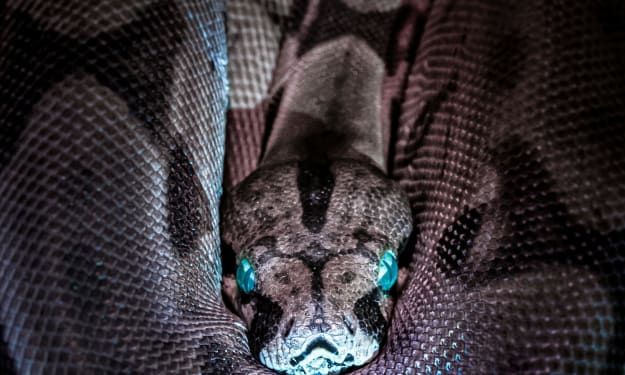Which animals are warm-blooded, and what does that mean?
Which animals are warm-blooded, and what does that mean?

Warm-blooded animals have evolved mechanisms that allow them to adapt to a wide range of environments. They can survive in almost any environment because their body temperature is independent of the ambient temperature. While thermoregulation is one of mother nature's most perfect creations, the ability of the organism to regulate its temperature is not without flaws. What lies beneath the term "thermoregulation"? What are the advantages and disadvantages of this adaptive strategy? What animals have a thermoneutral body temperature? Each of these questions is answered below.
What is thermoneutrality?
When we talk about thermoneutrality, we mean the ability to maintain a certain body temperature regardless of the temperature in the environment. Warm-blooded animals are able to maintain a constant temperature on a continuous or long-term basis. This is due to the mechanisms of thermoregulation and the process of thermogenesis, which serves the internal production of heat. It should be clearly emphasized, however, that not only internal processes, but also thermo-insulating body coverings — fur and feathers — and subcutaneous adipose tissue play a large role in maintaining temperature.
Thermoregulation in warm-blooded animals is accomplished by maintaining equilibrium between the heat generated in the body and absorbed from the environment and the heat released from the body to the environment. The proper temperature is generated by metabolic reactions and absorption of solar radiation, whereas its loss occurs as a result of radiation, conduction, convection, and evaporation of water in the body.
In warm-blooded animals, a thermoregulatory center located in the anterior hypothalamus is responsible for maintaining a constant body temperature. When the blood temperature rises, thermoreceptors are stimulated, resulting in vasodilation, heart rate increases, breathing becomes deeper, muscle tremor blockers are stimulated, and sweating begins. When the blood temperature is lowered, thermoreceptors are inhibited, which is a signal to stimulate heat production and limit heat loss. Blood vessels constrict, muscle tremor is stimulated, and the metabolism of fat cells and skeletal muscle accelerates, as does glucose burn in the liver and skeletal muscle.
Warming — advantages and disadvantages
In theory, warmbloodedness offers advantages. Animals can live in a wide range of environments, from hot deserts and temperate zones to freezing Arctic regions. In addition, thermoneutral animals can remain active at all times of the day and night, as their body temperature is not affected by environmental conditions. This is the main advantage of warm-blooded animals over ectothermic ones.
However, it should be remembered that maintaining a constant body temperature involves a significant energy expenditure, which in turn results in significant nutritional requirements of warm-blooded animals. In addition, cooling of the body involves the consumption of significant water reserves. This makes warm-blooded organisms more dependent on food and water than ectothermic animals, which can withstand periods of hunger and drought better.
Which animals are warm-blooded?
In the animal kingdom, two groups of vertebrates — mammals and birds — exhibit thermoneutrality. The former maintain a temperature of about 37 degrees Celsius, for the latter a body temperature of about 40 degrees Celsius is appropriate.
Savannah giraffe

Living in Africa, the savannah giraffe is the tallest land animal and the largest modern ruminant. Not everyone knows it, but its long neck is not just for reaching the treetops. An intricate system of blood vessels passes through it, keeping the blood cool before it reaches the brain. Skin and a specific respiratory system also play a large role in thermoregulation in giraffes, the design of which increases heat loss with evaporation.
Emperor penguin

The large penguin, which lives in Antarctica, can maintain a constant body temperature without changing its metabolism in the thermoneutral range of -10 to 20 degrees Celsius. When the limits are exceeded, the bird’s metabolism accelerates significantly. It is increased by the movements the emperor penguin makes while swimming and cooling down, by muscle shivering, and by the breakdown of fat by enzymes.
Vulture

It was once thought that the vulture’s bald head allowed it to stay clean more easily while feeding on carrion. Biologists now believe that this feature serves to thermoregulate the bird’s body. This theory seems to be supported by the behavior of vultures — when it is cold, they adopt a hunched posture and bury their heads, while in response to high temperatures they stretch their necks and open their wings.
Interesting facts about warm-blooded animals
- The smallest warm-blooded animal in the world is the hummingbird.
- Scientists believe that thermoneutrality appeared as early as the Jurassic period. It is likely that some dinosaurs, pterosaurs (flying reptiles) and mammalian reptiles possessed this mechanism.
- Some warm-blooded animals are capable of deliberately increasing their body temperature. An example is the oryx, a species of antelope that lives in desert areas. To prevent water loss, the animal stops sweating, equalizing its body temperature with that of its surroundings. Oryx can warm up its body up to 46 degrees Celsius!
- The only rodents that are not capable of thermoregulation are sand shrews, desert animals found in East Africa.
- Fish are ectothermic animals, but one species exhibits thermoneutrality. This is Lampris guttatus, which is able to maintain a body temperature that exceeds the ambient temperature by 5 degrees Celsius. The fins, mainly pectoral fins, which the fish flaps while swimming, are responsible for generating heat. In addition, their gills are constructed in a way that deoxygenated blood could warm oxygenated blood.






Comments
There are no comments for this story
Be the first to respond and start the conversation.